We checked out Namco Bandai’s new MOBA Supernova recently, giving the Alpha phase a little test drive and checking out some of the core features with a more extensive playthrough to see how it fared up against both the other games in the ever-growing genre as well as new MOBA that are also being released lately. With a few hours of gameplay under our belt we focused on checking out the features that we’d hope would separate Supernova from the pack and give it its own identity. Unfortunately as the Alpha testing was quite tight getting a game against other players was actually pretty difficult, queuing for over 15 minutes without a game popping, which isn’t surprising but our experience was solely against and with the AI bots.
The graphics are pretty sharp, AAA quality from both the in game combat graphics and effects as well as the simplistic and intuitive GUI, the music and sound was equally as good but the character voice overs got a little bit repetitive sometimes and a bit annoying. The tutorial was concise, giving players the choice of choosing their MOBA experience level and either focusing on the basics of a MOBA (lane pushing, minion waves, turrets, etc.) or just the new features in the game or core difference with Supernova and other games in the genre. The tutorial culminated in an AI match where we found ourselves as the heavily armored, low DPS tank: Ares, this may have been a big mistake as whilst we were more than able to keep ourselves healed it was painstaking how long it took to push our lane, using ranged attacks and self-heals the final AI game lasted a whopping 58 minutes. This did, admittedly, sour our first impressions slightly as we’ve become more accustomed to shorter game lengths for MOBA and actually find them preferable over the singular grind of pushing a lane for hours.
Whilst we’re no e-Sports pros we’ve played enough MOBA to at least be more than competent, but the pace of the game did feel a lot slower, from the speed of getting around the map to the lower damage output against players. Getting the drop on an enemy and getting them down to low health the power output as your shooting them whilst they walk away is so low that they can pretty much walk the entire length of the map with you attacking them and still be standing. However, all this can be mitigated to an extent as players gain XP and level up and acquire Attribute Points which they can spend to improve their base attributes, stuff like attack speed, range and power or your health, armor and movement. For every five attribute points we managed to acquire we could unlock a Mastery point, which let us get access to traits specific to our class but allowed us to customize the way the class would work i.e. an extremely defensive unit or maybe one that is defensive but focuses on healing. Combined with initial loadouts we could equip our Commander characters with and a choice of different Allied Abilities, there’s actually a surprising amount of customization for only 12 available Commanders.
The Commanders themselves were pretty varied, covering the main MOBA roles and having both ranged and melee combatants, they didn’t feel like they packed the same kind of punch as characters in other games and we could literally be chasing an enemy Commander back across the map shooting them bit by bit giving them more than enough time to get away. It all just felt a little slow, from damage output (even when not playing as ARES) to general mobility around the map, though we did have a recall feature where we could summon a ship after an uninterrupted 10 seconds that would take us back to our base (to replenish both energy and health as well as spend attribute and mastery points). When looking to jump back into the fray we could actually use this ship to be dropped anywhere on the map onto a friendly turret, allied Commander or minion/army unit, though using this ability had a long cooldown so it definitely had to be used with restraint as it could give a great tactical advantage when combined with other players.
Gameplay in general is extremely similar to most other MOBA, three lanes leading between enemy bases where teams have to fight past enemy sentry turrets and waves of AI controlled minions in the hopes of reaching the enemies’ core building (in this case the Auger) to destroy it. Using standard QWER keys for skill attacks and a few others here and there for an ancillary abilities it played as a traditional top down isometric MOBA. Between lanes we could also find camps that, whilst pretty tough at first, didn’t take too long to be able to dominate. Initially we weren’t entirely sure what the camps did, once we destroyed them there was a timer above the camp and we weren’t sure if it represented the time it would take for the camp critters to join our waves or a countdown until when the camp would respawn (it was the latter) and, in fact, the camps seem to primarily give resources or defend key points for opening up areas of visibility on the map. The main central map actually lets players destroy and then take control of a pretty epic and powerful robot as the main “boss”, though we never actually ended up taking it ourselves.
For the most part, with the odd little feature here and there, Supernova isn’t that different from every other MOBA on the market and plays exactly the same. However, the one thing that sets the game apart is its use of lane minions, in Supernova we were actually directly responsible for the makeup of these waves, the resources we acquired in game gave us points to spend to choose which of our unlocked units we wished to place in a minion wave and, as we levelled up and gained more currency, we could add new unit type or simply add more units to the full wave. Units themselves are unlocked as players increase their account rank, each one being susceptible to attacks from a particular enemy unit but being able to dominate others in a classic rock-paper-scissors battle. Players are able to monitor wave performance continuously to see whether they or their opponents waves are dominating and with this players can sell back the units they have in play and change up the composition of the wave to try and compete against this. Managing both your Commander character and keeping track on your waves to make sure you are either pushing with weight, or at least holding position, is an interesting metagame that has a StarCraft II vibe to it and needs an equal amount of attention as your Commander if players are hoping to perform well.
The game feels pretty well polished in its current state, though still needs the odd tweak here and there, but not straying too far from the core MOBA concept can either make or break any new titles as there’s very little reason to leave a MOBA you love for something that is very similar. The Army control might just be that extra element that many players are looking for to keep the game fresh but still be familiar enough to keep a core game they know they will enjoy; however it could equally put new players to the genre off with the amount of necessary multi-tasking that is expected (albeit there is an auto-buy option for those who don’t want to micromanage). Definitely a title to watch and overall we had a decent time playing the game.
SCORE:
- Pros: Unique spin on controlling wave minions/armies adding an extra layer of strategy, impressive graphics and dynamic effects
- Cons: Often slow pace of combat in comparison to other MOBA, multi-tasking Commander and Armies may be too much for some players
Rating: TBD
If you want to know more about this title visit our profile by clicking the "Info" button below.
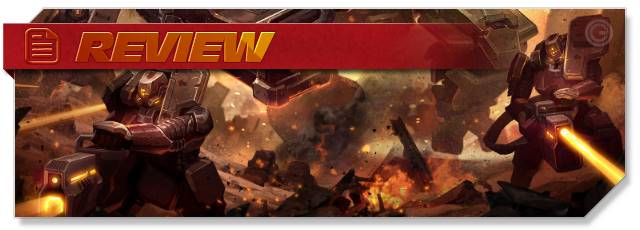
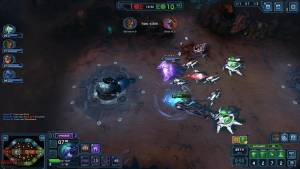
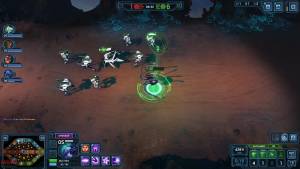
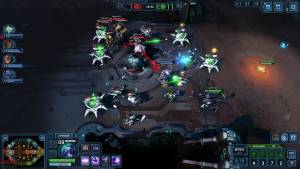
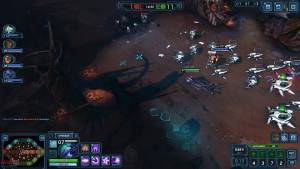
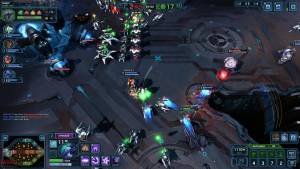
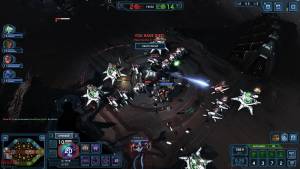
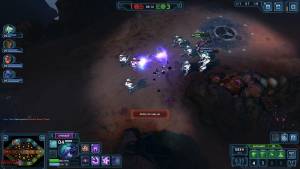
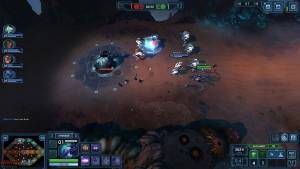


Deja tu comentario
You must be logged in to post a comment.